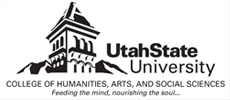First Page
58
Last Page
85
Abstract
As historians engage with literary texts, they should ask a few important questions. What is the text that I am using in my research? What is the manuscript tradition from which the manuscript or text evolved? How does that evolution inform the specific period I am studying? Did it evolve orally or in written form? And are there variations that have been handed down through time and through tradition that may provide greater context or clarity to my research? Implicit in these questions is an interest in authenticity and accuracy. As literary texts evolve and are shared over time, there are multiple factors that may lead a text away from its earliest forms, such as when a narrative is orally transmitted over multiple generations and then recorded in writing or when a manuscript is repeatedly copied by hand and errors are introduced into the text. The attempt to ascertain the earliest forms of a text is known as textual criticism. This branch of scholarship started in earnest at the beginning of the European Renaissance from the fourteenth to the sixteenth centuries, and led to the European Enlightenment of the late seventeenth and eighteenth centuries. In this article I will argue that scholars of Mormon history have not yet taken advantage of the historical insights that textual criticism has to offer, as a means of persuading the academic community to embrace this important methodology.

